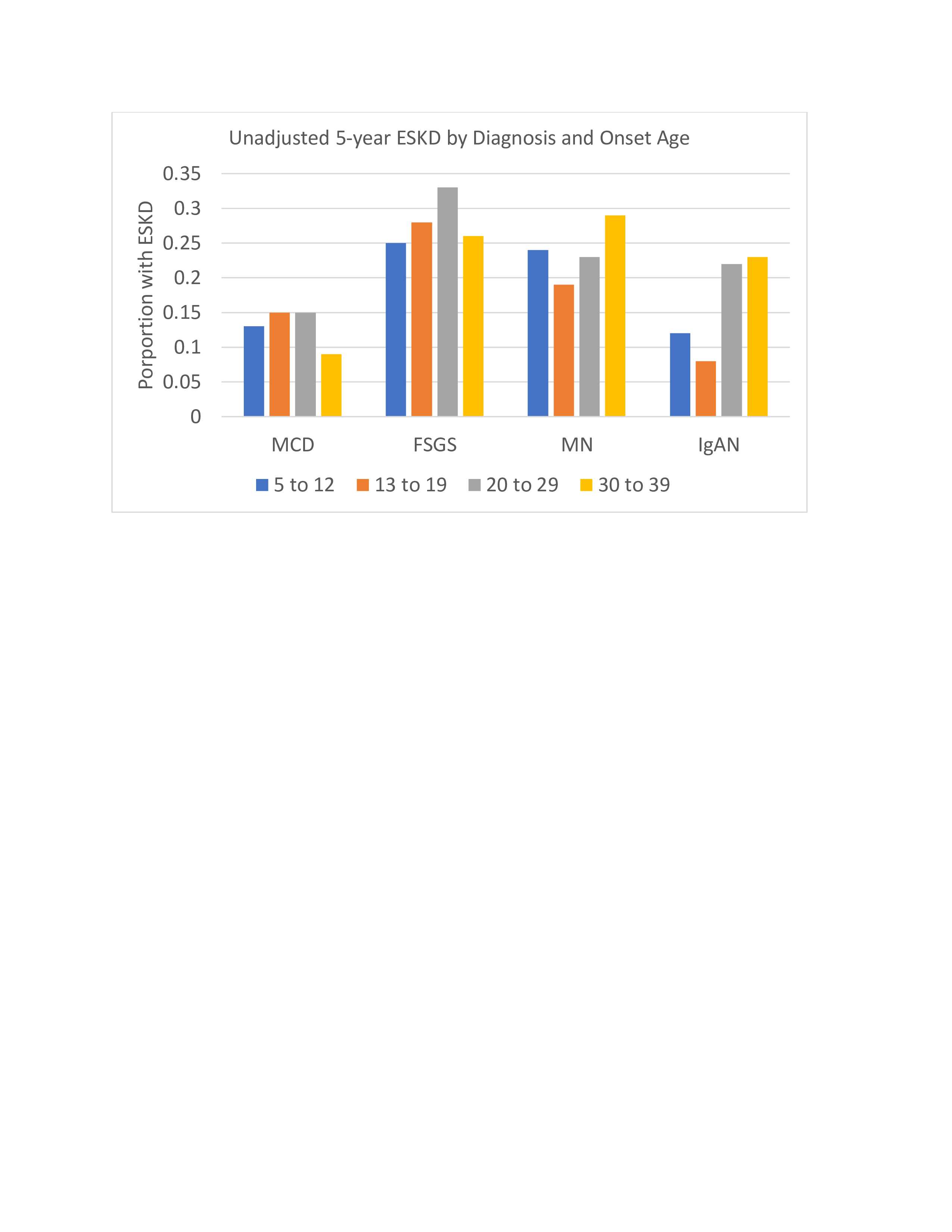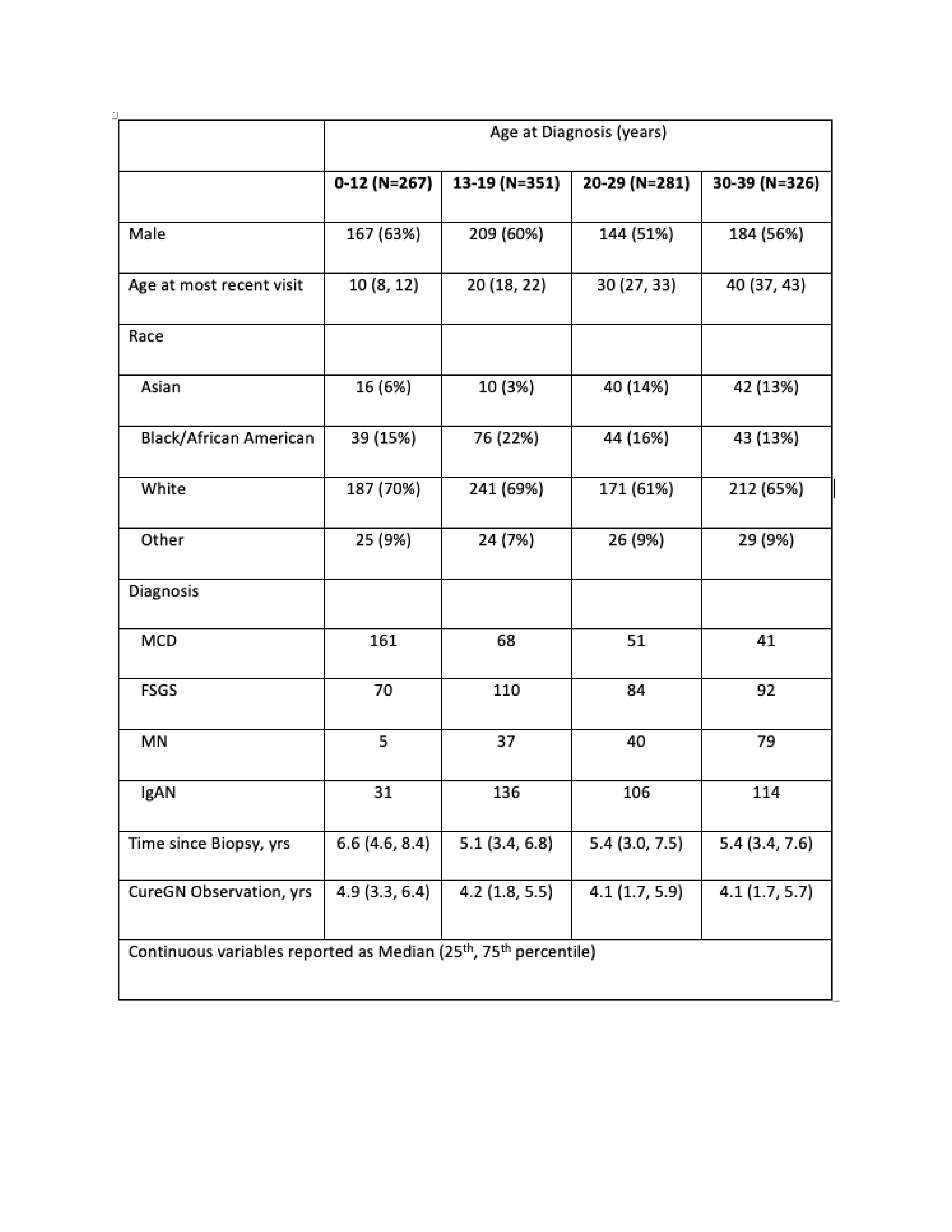Nephrology: Clinical
Nephrology 6: Glomerular/Clinical and Basic Science
64 - Adolescent onset glomerular disease outcomes, the clinical and social implications
Sunday, April 30, 2023
3:30 PM - 6:00 PM ET
Poster Number: 64
Publication Number: 64.351
Publication Number: 64.351
Kelly Garrity, University of California, Los Angeles David Geffen School of Medicine, Santa Monica, CA, United States; Nathaniel Putnam, University of Michigan Medical School, Ann Arbor, MI, United States; Debbie S. Gipson, University of Michigan, Ann Arbor, MI, United States; Jaya Isaac, The Children's Hospital at Montefiore, Bronx, NY, United States; Myda Khalid, Indiana University School of Medicine, Indianapolis, IN, United States; Elaine S. Kamil, UCLA School of Medicine and Cedars-Sinai Medical Center, Los Angeles, CA, United States; Susan F.. Massengill, Wake Forest School of Medicine of Wake Forest Baptist Medical Center, Charlotte, NC, United States

Kelly Garrity, MD (she/her/hers)
Fellow
University of California, Los Angeles David Geffen School of Medicine
Santa Monica, California, United States
Presenting Author(s)
Background: Few studies have examined social and clinical outcomes of adolescent and young adult (AYA) onset glomerular disease (GD) despite evidence that such outcomes may differ by age of disease onset.
Objective: Define the social and clinical outcomes of AYA onset GD and compare these outcomes to the general population and to GD at other ages of onset.
Design/Methods: CureGN prospective cohort study participants with Minimal Change Disease (MCD), Focal Segmental Glomerulosclerosis (FSGS), Membranous Nephropathy (MN), or IgA Nephropathy (IgAN) (n= 979) age 5-39 yrs at diagnosis were included. Adolescents (13-19) were compared to child (5-12), young adult (20-29), and adult (30-39) disease onset cohorts. Outcomes were defined as: occupation, high school (HS) diploma/GED, post-secondary education, pregnancy, and kidney survival. Three occupation categories were defined: (1) full-time, including full-time workers, students, and homemakers plus those working and studying part-time; (2) part-time, including part-time workers and part-time students with no other occupation; and (3) none if neither working nor studying. Unadjusted survival analyses of end stage kidney disease (ESKD) and 40% reduction in eGFR since biopsy, stratified by diagnosis and analyzed across onset groups, were performed.
Results: Demographic and clinical characteristics are shown in Table 1. 67% of the adolescent onset cohort had full-time occupation, compared to 68% with young adult onset, and 70% with adult onset. Among participants diagnosed by age 18 and were observed between ages 19-25 (n=358), 85% received a HS diploma by age 25, compared to 94% of the US population. Among participants diagnosed by age 26 and observed between ages 27-35 (n=149), 34% received a post-secondary education degree by age 35, compared to 49% in the US population. 3% of women with adolescent onset (median current age 20, IQR 18-22) and 14% with young adult onset (median current age 30, IQR 27-33) had at least one live birth after their diagnosis, compared to 13% of women in the US population by age 19 and 61% by age 29. Kidney survival analyses are shown in Figure 1.
Conclusion(s): Individuals with AYA onset GD are less likely than the general US population to earn a HS diploma/GED or post-secondary education. Participants of all onset groups have similar rates of full-time occupation (school/work). Females with adolescent onset GD had significantly fewer live births than the general population at their age, and this trend continued in young adulthood. Unadjusted kidney survival outcomes vary by age and diagnosis and will benefit from planned adjusted analysis.


